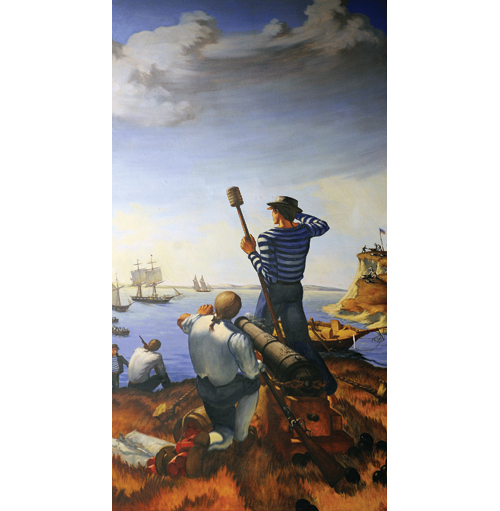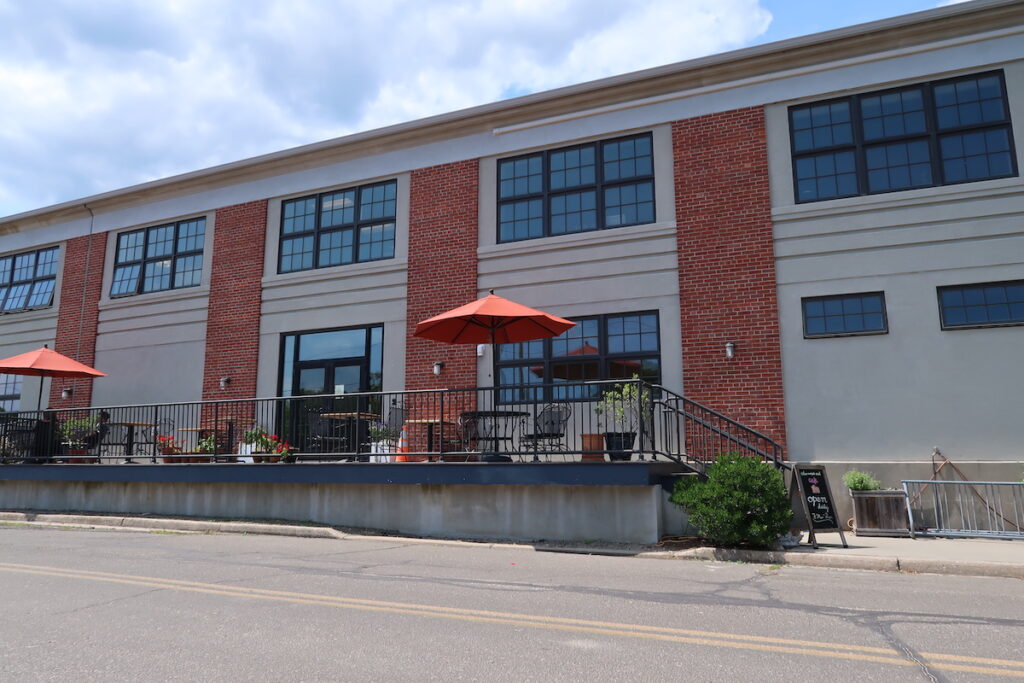War along our shores: Tale of the Cutter Eagle

Unable to take the Eagle using her barges, the Dispatch was content to fire at it from afar.
A ship beached on the shore may seem like a sitting duck, but the Dispatch’s cannonades — shorter cannons designed for close-range ship-to-ship combat — weren’t very accurate at that range, Mr. Wines said. Cannonballs aimed too low slammed into the bluffs harmlessly; those aimed too high flew over the cliffs and crashed into the farm fields beyond.
Meanwhile, the volunteers — with the help of the local militia — set up four of the Eagle’s cannons on the bluffs, planted an American flag nearby and steeled themselves with “a determination not to ‘give up the ship,’<\!q>” according to a volunteer’s account reported by the Connecticut Journal newspaper.
For hours, the Dispatch pounded the Americans’ position, splintering both of the Eagle’s masts. Yet the British couldn’t get close enough to capture the stubborn Americans’ ship and couldn’t budge them from their high ground.
At least once, the British tried to land on the beach. It had been reported by Samuel Terry Hudson, a Riverhead man who documented an oral history of the battle nearly a century later, that the Americans wiped out the landing party, killing many British soldiers. But Mr. Wines thinks this account is a gross exaggeration. While the Connecticut Journal’s report mentions landings, Capt. Lee himself wrote that the landing parties never came within range of the Eagle’s guns. And Capt. Gallaway of the Dispatch doesn’t mention the failed landing attempt in his log.
By 4 p.m., the Eagle, battered again and again by cannon fire, had been mangled.
“In the course of three hours they … shot her through above water in every direction,” Capt. Lee wrote.
The British kept up their fire into the evening, according to some accounts. The Americans, meanwhile, set up watches to guard the beach overnight. By the morning of Oct. 12, Capt. Gallaway realized that the Eagle was water-logged. He headed to Connecticut in the Dispatch to drop off prisoners from the Susan, leaving the Eagle a pockmarked wreck on the beach.
But Capt. Lee and his men patched up their ship and floated it back into the Sound.








